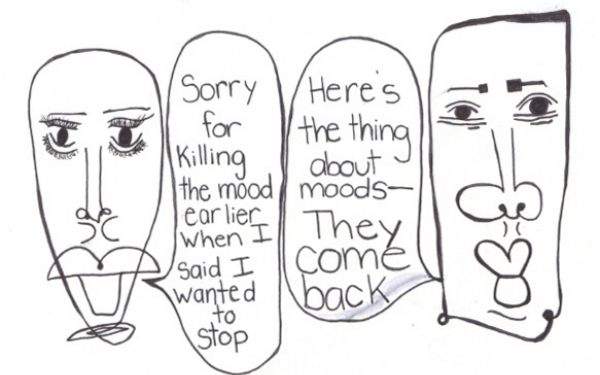Sex Ed(itorial): LGBTQ+ Students Need Inclusive Sex Ed
Leaving Queer Topics Out of Sex Ed Can Have Dangerous Consequences
The topic of sexual education has always put students, parents, and teachers on edge.
Over the past few years, schools have had to ask some tough questions, like whether or not students in grade school or under should learn about gender and sexual orientation in their sex education classes. More and more schools are answering “yes” but some still insist that queer topics do not have a place in public schools.
With same sex marriage being legal in Canada for over a decade, it may be easy to think that the fight for queer equality has been fought and won. While the LGBTQ community has progressed an incredible amount in a short time, the fight is not over yet.
Sex education is a course that should not be taken lightly, given that it can have a number of personal and social consequences. It provides the structure around sexuality, one of the most vulnerable things about being human, both physically and emotionally.
In light of Ontario’s changes to sex ed policies made in July, which reverted the curriculum back to a 1998 version that fails to address sexual orientation and gender identity, it’s important to reiterate what queer representation in sex education means, and what it has done for the queer community.
To those that are unfamiliar with the topic, it can seem like the HIV epidemic —and its societal associations with gay and transgender communities— has long passed. However, men who have sex with men (MSMs) and transgender women are still disproportionately affected by HIV and other STIs, according to the CDC. When queer youth doesn’t have a sex education curriculum designed for them, it’s easy to develop dangerous sexual habits, which then makes it easier for some to turn around and blame queer people for spreading disease. It’s a vicious circle perpetuated by poor education.
The integration of queer topics into sex education equips queer-identifying young adults with the knowledge they need to stay safe. Staying safe is not only important in that it can prevent STIs and protects an already vulnerable group of young people, but it breaks a historical trend of equating homosexuality and queerness with disease. Queer people are not the cause of disease—misinformation is.
In addition to the physical costs of leaving queer students out of sex ed, there is an emotional cost as well. When the queer community is excluded from the conversation around sex and intimacy, it invalidates them. If they aren’t included in the topics that affect them directly, it teaches them that they are abnormal.
Students are just beginning to figure out who they are, and when we design a curriculum for only straight, gender conforming students, we are maintaining a status quo that leaves queer students more depressed, more anxious and more prone to substance abuse. According to the Canadian Mental Health Association of Ontario, the risk of suicide and substance abuse in queer youth can be up to 14 times that of their straight peers.
An inclusive education would break down those barriers and improve queer students’ mental health and well-being by portraying them as people, not anomalies.
While mental health problems in queer youth may not be directly caused by a lack of information, the discrimination they face because of it might be. When we bring queer topics into the classroom, straight, gender-conforming teens are listening, too.
Coming-out as a teenager can cause feelings of isolation and can put students at risk of bullying from their peers. When we bring queer topics to the same level of importance that we have given to anatomy and birth control, queer students can be accepted rather than just tolerated.
Some may argue that queer topics are too complex for children or teenagers to comprehend. The fact is that students can understand complex things when they are presented to them as normal. Integrating queer topics is not particularly a challenge for children so much as it is a problem for teachers to know how to address it.
When mistakes happen, as they often do, the solution is not to go back to the way things were. The next step should be to listen and learn from those mistakes in order to move forward. Queer identities are often fluid, and we should be giving students the freedom to explore them safely, especially considering the growing number of queer-identifying youth. A 2016 study by the J. Walter Innovation group found that only 48 per cent of Gen Zs identified as completely heterosexual, and 56 per cent knew someone who used gender neutral pronouns.
As the number of queer-identifying youth grows, a system needs to be set in place that provides them with the support and information they need. Even when same-sex marriage is legal, even when transgender people have legal rights to their identities, sex education has a crucial role to play.






